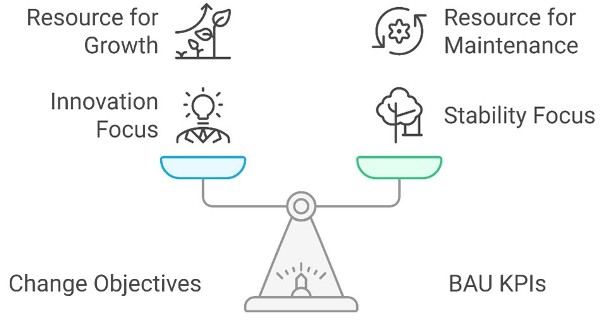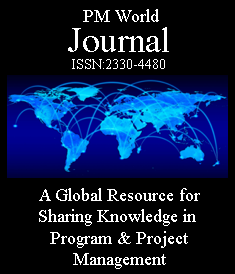Implementing BS202002: Benefits management
on portfolios, programmes and projects
SERIES ARTICLE
By Dr. Hugo Minney
United Kingdom
Organizations today face a tough balancing act. They need to drive change while keeping the lights on. This is where benefits management and portfolio prioritization come in handy. But before we dive into these tools, let’s talk about something even more fundamental: strategy.
The Foundation: Knowing Your Strategy
Before you can prioritize projects or manage benefits, you need to know where you’re headed. It’s like planning a road trip – you need a destination before you can choose the best route.
Clarifying Your Direction
Whether you’re a small department, a large corporation, or even a whole country, you need to know what you’re trying to achieve. Ask yourself:
- What kind of organization (or country) do we want to be?
- What’s our top priority? Is it profit, innovation, social impact, or something else?
- How will we know if we’re succeeding?
For example, a tech company might prioritize building an impressive intellectual property portfolio. A government agency might focus on reducing inequality as part of a whole range of programmes to improve quality of life. A startup might be all about rapid growth.
Your direction isn’t just about change. The annual report usually focuses solely on ‘objectives for change’, overlooking the Key Performance Indicators (KPIs) that keep the lights on. These BAU activities are vital (that’s where your income comes from) and can be disrupted if there’s too much emphasis on change.
A balanced approach might include:
- 7-12 objectives for change.
- An equal number of BAU KPIs.
With modern technology, tracking 15-30 key objectives (collations of benefits and objectives for the individual departments and teams) should be manageable for senior leadership. This comprehensive view helps ensure that:
- Change initiatives don’t inadvertently harm essential BAU activities.
- BAU isn’t starved of needed investment for maintenance and ongoing improvement (run+) due to an overemphasis on change.
- Different departments or agencies aren’t working at cross-purposes, because their joint contributions to the same organization-level objectives are visible.
Remember, the portfolio’s role is to help the organization achieve all its objectives – both change and BAU. The portfolio should not set its own goals in isolation (ideally it should have its goals given to it by the next level up in the hierarchy, i.e. the Board of Directors, but there’s rarely as much clarity as this). This holistic approach prevents the risk of ‘winning the battle but losing the war’ by delivering on change objectives at the expense of overall organizational health.

Figure 1 Balancing change and stability for organizational health
From Clarity to Strategy
Once you’re clear on your direction, you can develop a strategy. This strategy then translates into specific objectives and benefits. It’s like turning your destination into a series of landmarks along the way.
Remember, if you don’t know what you want, how will you know if you’re going in the right direction? How will you know if you got there?
More…
To read entire report, click here
Editor’s note: The author Dr. Hugo Minney is a Fellow of APM (Association for Project Management), a Member of PMI and PMI UK, Co-Chair of APM’s Benefits and Value SIG, and committee member of PMI UK’s Sustainability Community of Action. For more, see his author profile at the end of this article.
[1] How to cite this work: Minney, H. (2025). How benefits management supports portfolio prioritization, Implementing BS202002: Benefits management on portfolios, programmes and projects, series article, PM World Journal, Volume XIV, Issue III, March. Available online at http://pmworldlibrary.net/wp-content/uploads/2025/03/pmwj150-Mar2025-Minney-how-benefits-management-supports-portfolio-prioritization.pdf
About the Author

Dr Hugo Minney
London, UK
![]()
Dr. Hugo Minney is a Fellow of APM (Association for Project Management), a Member of PMI and PMI UK, Co-Chair of APM’s Benefits and Value SIG and committee member of PMI UK’s Sustainability Community of Action (none of which are paid).
Minney set out to become a farmer, but was defeated by bureaucracy. He sold high ticket computer systems and specialist software for workforce planning; joined the National Health Service for 18 years (and as a Chief Executive for the last 7 of these), and is now a project management consultant with a sideline chairing a charity restoring the sense of community for young people.
Minney works in project management, and in particular benefits management, motivating team members by reporting what they are achieving together and changing the community and culture to want to achieve – together. At present, he’s more involved on the governance side, accredited as a Social Value practitioner and Chartered Project Professional, and reviewing the balance of projects and contribution to objectives and benefits across portfolios.
Dr. Minney can be contacted at hugo.minney@thesocialreturnco.org
To view previous works by Hugo Minney, visit his author showcase in the PM World Library at https://pmworldlibrary.net/authors/dr-hugo-minney/









